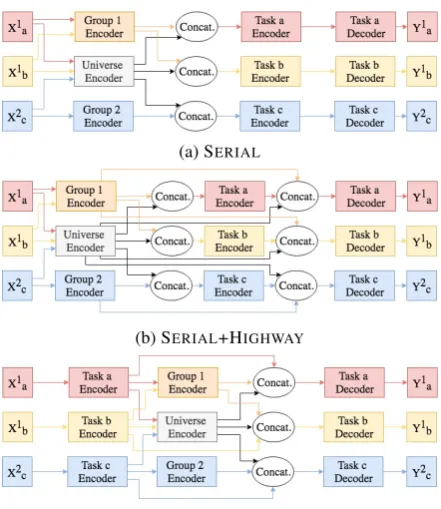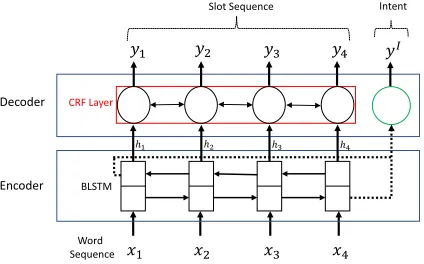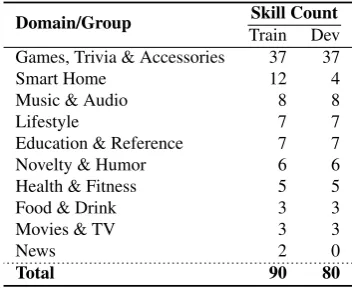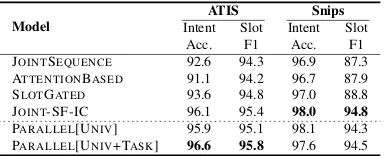Multi Task Networks with Universe, Group, and Task Feature Learning
Full text
Figure
![Figure 1: The Pa, btecture, which learns universe, group, and task features.Three tasksARALLEL[UNIV+GROUP+TASK] archi- a, b, and c are illustrated in the figure where ∈ group1 and c ∈ group2.](https://thumb-us.123doks.com/thumbv2/123dok_us/175202.512308/3.595.307.527.63.177/figure-btecture-universe-features-tasksarallel-group-illustrated-gure.webp)



Related documents
Uterine prolapse is one of the gynaecological morbidities among women, strongly associated with age, parity and place of delivery.. A number of risk factors with
Investigation of Kyoto Encyclopedia of Genes and Gen- omes (KEGG) pathways overrepresented in gene dupli- cations associated with 2R (Additional file 10, Table S4) revealed four
In a second effort, numerous attempts to increase the rate of cytosine to uracil conversion were made, including: (1) digesting the genomic DNA with an endonuclease such as Pst I
Formal Evaluation Process for Annual and Continuing Contract Teachers * •Continuing - Notification of evaluation in writing by contract issuance •Annual - Normal
The aim of the present study was to investigate and compare the gender types of employed Iranian women regarding their mental health and emotional intelligence. To do
Supplies Subcommittee • Mop Analysis Increased Expenses ½ Start-up Costs ½ Replacement Costs Decreased Expenses ¾ Chemical Costs ¾ Water Costs ¾ Labor Costs ¾ Worker’s
To obtain the unit-to-unit variability of the aerodynamic particle number size distribution over a wide particle size range, two procedures were carried out: (a) overnight
Percentage of QTL truly identified (QTL found) and number of QTL found (nb of QTL found) as a function of the number of QTL, their effects, their locations and the method.

